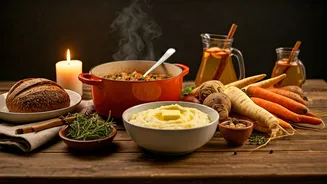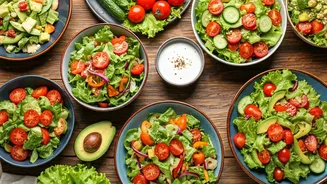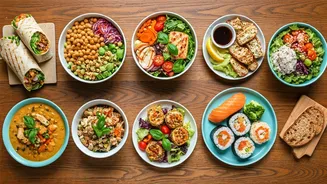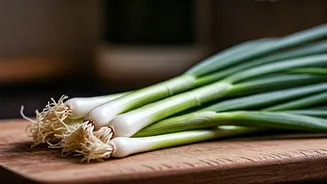Pantry Powerhouses
Begin with the foundation: the pantry. Stocking up on versatile staples is key to effortless winter cooking. Consider items like pasta, rice, and various
grains such as quinoa or couscous, which serve as excellent bases for numerous dishes. Canned goods are invaluable, including diced tomatoes, beans (chickpeas, kidney beans, black beans), and lentils, offering convenience and nutritional value. Don't forget dried herbs and spices – these are your secret weapons for infusing dishes with flavor. Think oregano, basil, thyme, and warming spices like cinnamon, nutmeg, and cloves for a touch of winter comfort. Oils (olive, coconut), vinegars, and soy sauce are also essential. Keep your pantry well-stocked, and you'll always be prepared to whip up a satisfying meal, no matter the weather. Consider also a variety of nuts and seeds for snacking or adding a textural component to salads and warm dishes.
Veggie and Fruit Staples
Next, focus on fresh produce. Root vegetables are a winter's best friend. Carrots, potatoes, sweet potatoes, parsnips, and beets are naturally hearty and delicious roasted, mashed, or added to stews. Include leafy greens that can withstand the cold, such as spinach, kale, and collard greens, for salads and soups. Onions, garlic, and ginger are indispensable for building flavor in almost any savory dish. For fruits, citrus fruits (oranges, grapefruits, lemons) provide a burst of sunshine and vitamin C. Apples and pears are excellent choices for baking, snacking, or adding to salads. Remember that frozen fruits and vegetables are great alternatives, holding onto their nutritional value. Having these staples available means you can easily create diverse and nourishing meals throughout the winter.
Protein Sources Galore
Protein is vital for feeling full and satisfied. Include a range of protein sources in your grocery list. For meat-eaters, consider stocking up on chicken breasts, ground turkey or beef, and cuts suitable for slow cooking, like chuck roast. Fish like salmon, which is rich in omega-3 fatty acids, can be baked or grilled for a quick and healthy meal. Eggs are a versatile source of protein that can be used for breakfast, lunch, or dinner. For those who prefer vegetarian or vegan options, ensure you have plenty of tofu, tempeh, and a variety of beans. Consider plant-based protein powders if you’re looking for a quick and simple way to boost your protein intake. These protein sources can be mixed and matched to create numerous fulfilling meals.
Comforting Dairy Options
Dairy can bring a sense of warmth and comfort to your winter dishes. Milk is a staple, use it for cereal, smoothies, or baking. Yogurt, particularly Greek yogurt, is a good source of protein and can be used for breakfast with fruit, in savory dips, or as a topping for curries. Cheese adds richness and flavor to countless dishes. Stock up on cheddar, mozzarella, and your favorite cheeses to enhance your meals. Butter is an essential for baking and cooking. If you have dietary restrictions or prefer plant-based options, consider dairy-free alternatives such as almond milk, soy milk, or coconut yogurt. Plant-based butter and cheeses are also readily available, enabling you to create comforting winter meals while catering to various dietary needs.
Snacks and Treats
Don't forget the treats! Winter is a wonderful time to indulge in comforting snacks and occasional desserts. Trail mix, nuts, and seeds are good for a quick energy boost. Crackers and hummus are convenient for a light lunch or snack. Dark chocolate, in moderation, can lift your mood and provide antioxidants. Consider buying ingredients for homemade treats like cookies, brownies, or muffins. Having a stash of snacks allows you to satisfy sweet cravings without the need for an elaborate dessert. For a healthier option, keep fruits like apples, bananas, and oranges on hand for snacking. Ultimately, treat yourself and embrace the coziness of the winter season.












